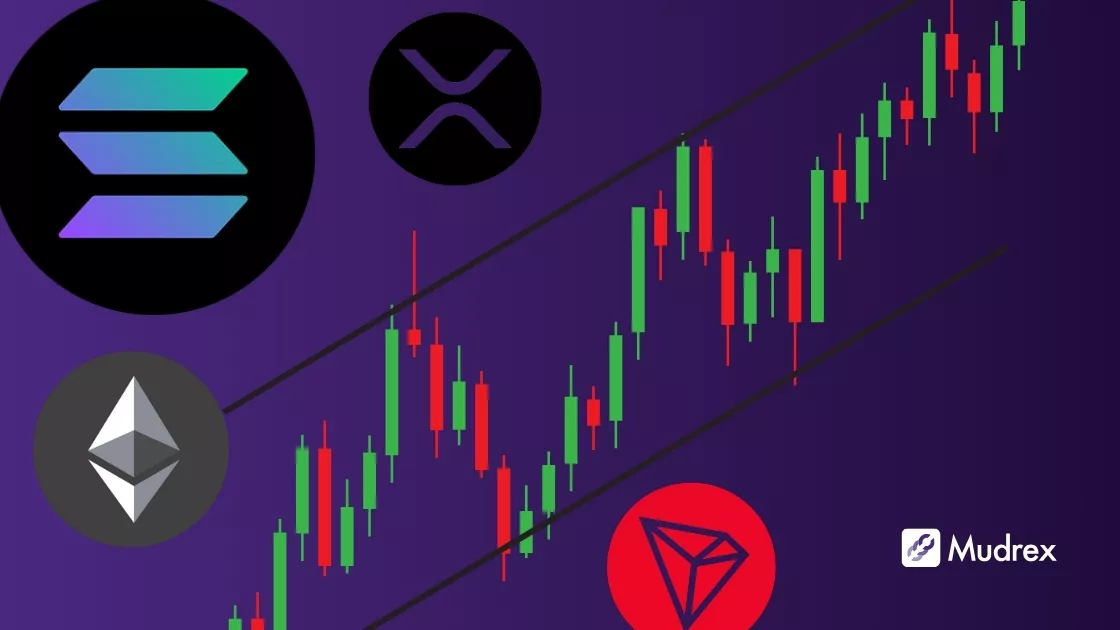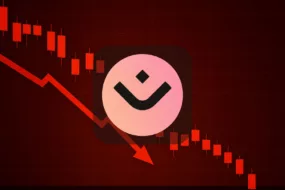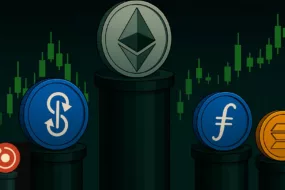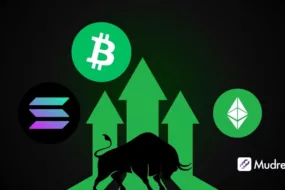
How to Prepare for Altcoin Season
The cryptocurrency landscape is on the brink of transformation. With institutional investors making their mark on Bitcoin, whispers of an impending altcoin season are growing louder. As the dynamics shift, investors must brace themselves—strategies and preparations are essential. What secrets lie beneath the surface, and how can one navigate this thrilling yet unpredictable market?
Key Takeaways:
- Preparation tactics for altcoin season
- Analyses of alt-coin
- Role of Portfolio management and Diversification
- Impact of market sentiments on altcoin season
What does preparation for the altcoin season entail?
Preparation for the altcoin season entails several key strategies. Investors should analyze market trends, focusing on liquidity and Bitcoin dominance, as these factors often signal the onset of altcoin rallies. Additionally, conducting thorough research on promising altcoins and implementing risk management strategies are essential to navigate the volatility typical of this period.
Monitoring social media sentiment and trading volumes can provide insights into emerging altcoin trends. Historically, alt season occurs when Bitcoin dominance falls below 40%, indicating a shift in investor interest. Diversifying portfolios across various altcoins, particularly those linked to strong narratives like DeFi or AI, can mitigate risks. Utilizing technical analysis tools, such as moving averages and the Relative Strength Index (RSI), helps identify optimal entry and exit points.
What do traders need to know beforehand?
Before the next altcoin season, traders should understand key indicators such as the Altcoin Season Index, which measures altcoin performance against Bitcoin, and monitor Bitcoin dominance, as a decline often signals a shift towards altcoins. Additionally, analyzing trading volumes, market sentiment, and historical patterns can provide valuable insights into potential opportunities.
Traders should also be aware of the risks associated with altcoin investments, including market volatility and speculative bubbles. Staying informed about technological developments and regulatory changes is crucial, as these factors can significantly impact altcoin performance. Diversifying investments and employing risk management strategies will help mitigate potential losses during unpredictable market conditions.
How can you analyse altcoin performance and trends to spot potential during altcoin seasons?
To analyze altcoin performance and trends during altcoin seasons, consider the following approaches:
- Altcoin Season Index: Utilize the Altcoin Season Index, which measures the performance of the top 50 altcoins against Bitcoin over a specific period. A reading above 75% indicates that altcoins are outperforming Bitcoin, signaling a potential altcoin season.
- Bitcoin Dominance: Monitor Bitcoin dominance, which reflects Bitcoin’s market capitalization relative to the total cryptocurrency market. A decline in Bitcoin dominance often suggests that capital is flowing into altcoins, indicating a shift towards altcoin season.
- Total2 Market Cap: Track the Total2 Market Cap, which represents the market capitalization of all cryptocurrencies excluding Bitcoin. An increase in this metric indicates growing investor confidence in altcoins and can signal the start of an altcoin season.
- Trading Volume Analysis: Analyze trading volumes for altcoins. Significant spikes in trading activity can indicate heightened interest and potential price movements, often preceding an altcoin season.
ALSO READ: How To Analyze Crypto Charts: A Beginner’s Guide
- Technical Analysis: Employ technical indicators such as moving averages, Bollinger Bands, and the Relative Strength Index (RSI) to identify trends and potential entry or exit points for altcoin investments.
- Social Sentiment Indicators: Keep an eye on social media trends and community engagement around specific altcoins. Increased discussions and positive sentiment can indicate growing interest and potential price appreciation.
- Historical Patterns: Review historical data to identify past altcoin seasons and their triggers. Understanding previous cycles can help predict future movements and inform investment strategies.
What strategies can be used to minimise risk while investing in altcoins?
To minimize risk while investing in altcoins, consider implementing the following strategies:
- Diversification: Spread your investments across a variety of altcoins rather than concentrating on a single asset. This approach helps mitigate the impact of poor performance from any one cryptocurrency, as gains in other assets can offset losses.
- Thorough Research: Conduct comprehensive research on each altcoin before investing. Analyze factors such as the project’s fundamentals, use case, development team, and market trends. Understanding the underlying technology and market potential can help you make informed decisions.
- Set Realistic Investment Goals: Establish clear and achievable investment goals based on your risk tolerance and financial objectives. This clarity can guide your investment choices and help you avoid impulsive decisions driven by market fluctuations.
- Use Stop-Loss Orders: Implement stop-loss orders to automatically sell your altcoins if their prices fall to a predetermined level. This strategy helps limit potential losses and protects your capital during market downturns.
Also Check, Altcoin Investment Stategies
- Invest Only What You Can Afford to Lose: Given the inherent volatility of altcoins, only invest funds that you can afford to lose. This mindset can help you manage stress and make rational decisions during market fluctuations.
What role does market sentiment play in preparing for an altcoin rally?
Market sentiment significantly influences altcoin rallies, as it reflects investor attitudes and emotions towards the market. Positive sentiment can drive demand and prices up, while negative sentiment may lead to sell-offs, making it essential to gauge market mood when strategizing investments. Understanding market sentiment is crucial for anticipating altcoin rallies.
It shapes investor behavior, where optimism can lead to increased buying activity, pushing prices higher. Conversely, fear or uncertainty can trigger sell-offs. Monitoring sentiment indicators helps investors make informed decisions, aligning their strategies with prevailing market emotions to capitalize on potential price movements during altcoin seasons.
How do portfolio management, diversification, and setting stop-losses play into altcoin season preparation?
To manage a crypto portfolio effectively during altcoin season, focus on diversification and setting stop-losses. Diversify by investing in a mix of large-cap, mid-cap, and promising low-cap altcoins to spread risk. Additionally, establish stop-loss orders to automatically sell assets if their prices drop to predetermined levels, helping to limit potential losses.
1. Portfolio Management
Effective portfolio management is crucial in the volatile world of cryptocurrency. It involves regularly reviewing and adjusting your investments to align with your financial goals and market conditions. Allocate your capital wisely across different assets, ensuring that you are not overly exposed to any single cryptocurrency. This approach helps in mitigating risks associated with market fluctuations.
2. Diversification
Diversification is a key strategy to minimize risk. By spreading your investments across various cryptocurrencies, you can reduce the impact of poor performance from any single asset. Consider investing in a mix of established cryptocurrencies like Bitcoin and Ethereum, alongside promising altcoins that have strong fundamentals and growth potential. This balanced approach can enhance your portfolio’s resilience against market volatility.
3. Setting Stop-Losses
Implementing stop-loss orders is essential for protecting your investments. A stop-loss order automatically sells your asset when it reaches a specified price, helping to limit potential losses. Determine your risk tolerance and set stop-loss levels accordingly. Avoid placing them too close to your entry price to prevent being stopped out by minor price fluctuations. This strategy allows you to maintain your position while safeguarding against significant downturns.
Conclusion
Preparing for altcoin season involves a combination of market analysis, risk management, and informed decision-making. By leveraging tools like the Altcoin Season Index and staying informed on market trends, investors can identify potential opportunities while minimizing risks. Engage with the Mudrex community to stay updated and share insights with fellow traders! Join us on Telegram for discussions and support as we navigate the altcoin landscape together.
FAQs
What triggers the altcoin season?
Altcoin season is triggered by a combination of factors, including Bitcoin’s price stabilization, increased investor interest in alternative cryptocurrencies, and a decline in Bitcoin’s market dominance. These conditions create an environment where altcoins can outperform Bitcoin, leading to significant price gains.
How do you know when altcoin season is?
You can identify altcoin season by monitoring Bitcoin’s dominance, observing when altcoins start to outperform Bitcoin, and noting increased trading volumes and market sentiment favoring altcoins. Key indicators include a sustained rise in altcoin prices and a shift in investor focus.
How long do alt seasons last?
Altcoin seasons typically last from a few weeks to several months, depending on market conditions and investor sentiment. The duration can vary significantly, influenced by factors such as Bitcoin’s performance, overall market trends, and external economic events.
Which crypto will boom in 2025?
Predicting which crypto will boom in 2025 is speculative, but projects with strong fundamentals, innovative technology, and active communities are likely candidates. Keep an eye on developments in DeFi, NFTs, and layer-2 solutions, as they may drive significant growth.
What are the top 10 altcoins?
The top 10 altcoins often include Ethereum (ETH), Binance Coin (BNB), Cardano (ADA), Solana (SOL), Ripple (XRP), Polkadot (DOT), Chainlink (LINK), Litecoin (LTC), Dogecoin (DOGE), and Avalanche (AVAX). Rankings can fluctuate based on market conditions and developments.





